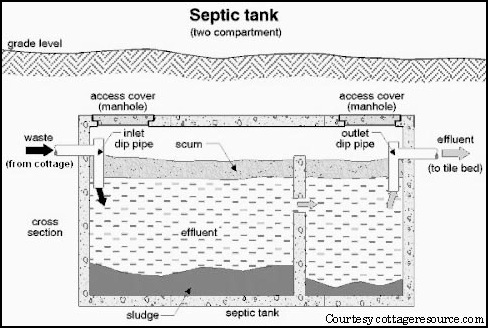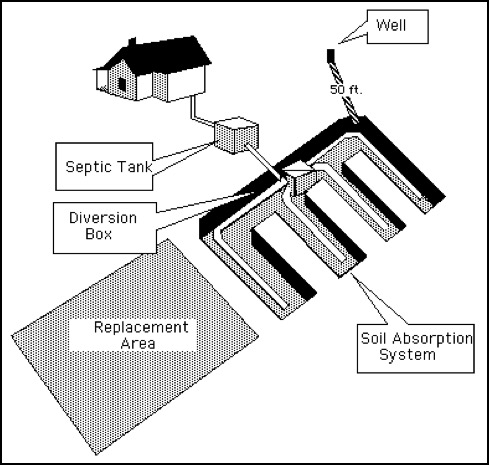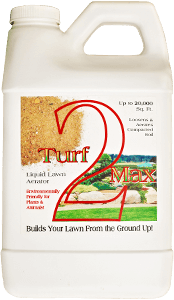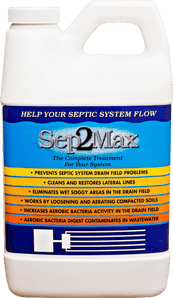A typical septic system design has four components: a wastewater pipe from the home, a septic tank, the drain field, and the soil. If properly designed and maintained the septic system can function as an effective treatment of wastewater. However, a failing septic system can contaminate the groundwater which could be the source for your or someone else’s drinking water.
The outlet from your home discharges all of the wastewater directly into the septic tank. The septic tank is a sealed container normally made of fiberglass, polyethylene, or concrete. The function of the tank is to hold the wastewater long enough to allow the solids to settle to the bottom. Hydrophobic materials such as grease and oil float on the surface which is sometimes referred to as scum.
Access to the septic tank is usually by a manhole on the top. However, many of newer systems have an access on both ends called a riser. This provides easy access for pumping. Compartments and a T shaped outlet help prevent the scum from leaving the tank. Screens should be in place to limit solids from entering into the septic leach field.


The effluent leaves the septic tank and enters into the drain field. It is here where the final treatment of the wastewater takes place. If the septic drain fields are saturated, they will become waterlogged and can cause a septic system failure in the plumbing. If this happens the treatment of wastewater ceases.
The final component of the septic system design is the soil. Wastewater infiltrates and percolates into the soil. This is where the critical breakdown of harmful bacteria, viruses and organic matter take place. Good soil is essential for a properly functioning onsite sewage treatment.
However, if your area is not suitable for a typical septic system, consider an alternative such as using peat moss and or sand instead of soil for the septic leach field. Always check with your local health department for more information regarding options and regulations.
Finally, be sure to check out the Sep2Max page regarding the value of a very effective septic system additive. According to the EPA, most septic system problems occur in the drain field.
Caution: Do not use with septic systems with clay tile laterals!

